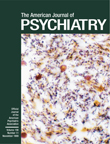Review and Critique of the New DSM-IV Diagnosis of Acute Stress Disorder
Abstract
OBJECTIVE: A new diagnosis can greatly influence scientific research, access to resources, and treatment selection in clinical practice. The authors review the historical evolution, rationale, empirical foundation, and clinical utility to date of the recently introduced diagnosis of acute stress disorder. METHOD: The conceptual basis and relevant methods for identifying a psychiatric syndrome are reviewed with respect to acute stress disorder, including selection of criteria for core symptoms; considerations of sensitivity and specificity of a syndrome definition; longitudinal course; and distinctions between normative and pathological phenomena. Particular attention is devoted to two major issues: the implications of the core feature requirement of three of five dissociative symptoms, and the question of whether there should be two separate diagnoses (acute stress disorder and posttraumatic stress disorder [PTSD]) describing posttraumatic syndromes. The widely divergent approaches in DSM-IV and ICD-10 are also reviewed. RESULTS: The diagnosis of acute stress disorder does not appear to achieve the important objective of providing adequate clinical coverage for individuals with acute posttraumatic symptoms. The validity and utility of requiring peritraumatic dissociative symptoms as a core feature are questionable, as is the separation of essentially continuous clinical phenomena into two disorders with different criteria sets (acute stress disorder and PTSD) based on persistence of symptoms for 30 or more days. CONCLUSIONS: Longitudinal studies using acute stress disorder criteria, as well as broader considerations of the clinical and scientific functions that posttraumatic diagnoses should serve, suggest a need to reevaluate the current DSM-IV approach to posttraumatic syndromes.



